Telecommunications Module
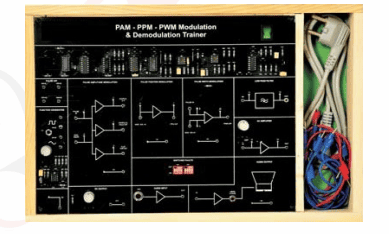
Order Code: 25268461.2
Category: General Lab Equipment V
The Analog and Digital Communication Trainer is a comprehensive educational tool designed to teach and demonstrate various concepts related to analog and digital communication systems. Below is an organized summary of the trainer systems and their ke...
SPECIFICATION
The Analog and Digital Communication Trainer is a comprehensive educational tool designed to teach and demonstrate various concepts related to analog and digital communication systems. Below is an organized summary of the trainer systems and their key features:
Analog Communication Overview
-
Analog Communication involves transmitting data through continuous signals that vary in amplitude and time. It’s often used for transmitting voice, video, and other signals.
-
Drawbacks: Analog systems can suffer from noise and signal degradation, especially over long distances.
Digital Communication Overview
-
Digital Communication uses discrete signals to transmit data and is generally more resilient to noise than analog communication.
-
The Trainer System helps understand various digital modulation and demodulation techniques, showcasing them through functional block diagrams for hands-on learning. It also includes test points to visualize signals on oscilloscopes.
List of Trainer Modules
1. DSB SSB Transmitter Trainer
-
Learning Focus:
-
Study of carrier frequency generation.
-
DSB & SSB AM generation and transmission.
-
Transmitter circuits and modulation index.
-
-
Technical Specifications:
-
Crystal-controlled carrier frequency, audio modulator, antenna, and speaker.
-
Power supply: 230V mains with a fixed +15V DC output.
-
2. DSB SSB Receiver Trainer
-
Learning Focus:
-
Study of DSB & SSB AM reception and detection.
-
Automatic Gain Control (AGC) and receiver circuits.
-
Sensitivity, selectivity, and fidelity of receivers.
-
-
Technical Specifications:
-
Frequency range: 980 KHz to 2.060 MHz.
-
Intermediate frequency: 455 KHz.
-
Tuning via a variable capacitor.
-
3. PAM, PPM, PWM Modulation and Demodulation Trainer
-
Learning Focus:
-
Pulse Amplitude Modulation (PAM), Pulse Position Modulation (PPM), Pulse Width Modulation (PWM) using natural and flat top sampling.
-
-
Technical Specifications:
-
Sine wave generator: 250Hz, 500Hz, 1 KHz, 2 KHz.
-
Adjustable amplitude and sampling frequencies (4, 8, 16, 32 kHz).
-
4. FM Transmitter and Receiver Trainer
-
Learning Focus:
-
Study frequency modulation using various modulators (reactance, varactor).
-
Study of FM detectors like detuned resonant, phase-locked loop (PLL), and ratio detectors.
-
-
Technical Specifications:
-
Two types of FM modulator: Reactance and Varactor.
-
Frequency modulation: 455 KHz.
-
5. Frequency Division Multiplexing and Demultiplexing Trainer
-
Learning Focus:
-
Study of frequency division modulation and demodulation.
-
-
Technical Specifications:
-
Modulation input frequency: 200 Hz to 10 KHz.
-
Second-order Butterworth filters with a 10 KHz cutoff.
-
6. TDM Pulse Code Modulation Transmitter Trainer
-
Learning Focus:
-
Study Pulse Code Modulation (PCM), ADC & DAC principles.
-
Study of error-checking codes like parity and Hamming codes.
-
-
Technical Specifications:
-
Crystal-controlled clock and sine wave generator.
-
RS-232 interface for PC communication.
-
7. TDM Pulse Code Demodulation Receiver Trainer
-
Learning Focus:
-
Study of PCM demodulation, TDM demultiplexing, and clock regeneration.
-
Error detection and correction in PCM systems.
-
-
Technical Specifications:
-
On-board PLL for clock regeneration.
-
Two-channel multiplexed data input.
-
8. Data Formatting and Carrier Modulation Trainer
-
Learning Focus:
-
Data conversion between various formats (NRZ, RZ, AMI, Manchester, etc.).
-
Study of different modulation techniques: ASK, FSK, PSK, QPSK.
-
-
Technical Specifications:
-
Carrier generation, data conditioning formats, and modulation techniques (ASK, FSK, PSK, QPSK).
-
On-board unipolar to bipolar conversion.
-
9. Data Reformatting and Carrier Demodulation Trainer
-
Learning Focus:
-
Study of various data formats conversion (NRZ, RZ, AMI, Manchester).
-
Demodulation of ASK, FSK, PSK, DPSK, and QPSK.
-
-
Technical Specifications:
-
Data reconditioning formats (Manchester, Mark, AMI, etc.).
-
Carrier demodulation and clock recovery.
-
10. Analog Sampling and Reconstruction Trainer
-
Learning Focus:
-
Study of signal sampling and reconstruction.
-
Effects of different sampling frequencies and low-pass filters.
-
-
Technical Specifications:
-
Pulse generator with selectable sampling frequencies (2, 4, 8, 16, 32 KHz).
-
Sine wave generator with synchronized frequencies.
-
11. Delta, Adaptive Delta, and Delta Sigma Modulation Trainer
-
Learning Focus:
-
Study of Delta Modulation and its variations (Adaptive and Sigma).
-
Study of slope overload and integrator gain effects.
-
-
Technical Specifications:
-
Adjustable clock frequency.
-
4th order Butterworth low-pass filter.
-
Optional Accessories
-
Cathode Ray Oscilloscope (sold separately) for visualizing signal waves.
Power Supply & Components
-
Most systems are powered by fixed DC power supplies (+12V, +5V DC, 250mA) and operate on mains power (230V, 50Hz ±10%).
-
The trainers use high-quality components: ICs, capacitors, resistors, and diodes.
-
Front panels are made from insulated PCB material with clear circuit symbols.
Salient Features
-
High-Class Construction: Durable ABS plastic or wooden cabinets.
-
User-Friendly: Connections through 2mm or 4mm sockets with patch cords for easy setup.
-
Comprehensive Manuals: Each trainer comes with an instructional manual for easy learning.
-
Compact Size: Each trainer is typically sized 12"x10" for easy storage and handling.

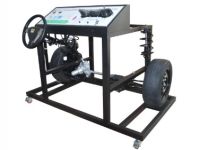
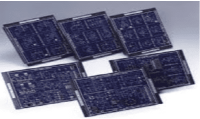
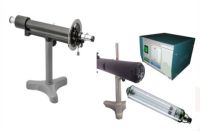
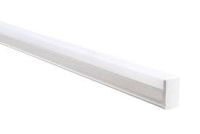
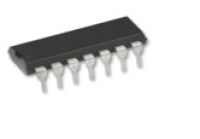



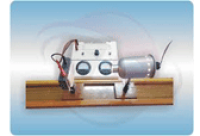

 91-9829132777
91-9829132777